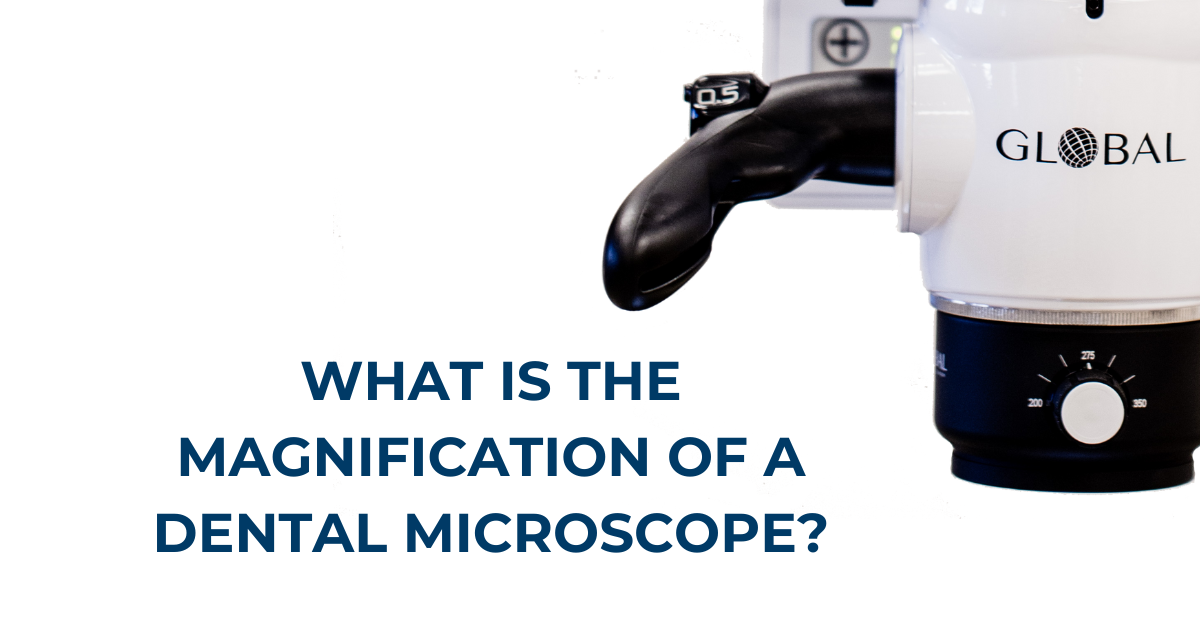Future Trends in Restorative Dentistry
.png)
The integration of advanced technology in dental practices is reshaping how dental professionals approach restorative procedures, enhancing precision, efficiency, and patient outcomes. Here, we'll explore the future trends in restorative dentistry that are set to revolutionize the field, drawing from our insights and innovations in dental microscopy.
1. Integration of Digital Dentistry
Digital dentistry is transforming the field with tools like digital impressions, CAD/CAM systems, and 3D printing. These technologies streamline the design and fabrication of dental restorations, reducing chair time and improving the fit and function of prosthetics. Our dental microscopes are designed to seamlessly integrate with digital tools, providing real-time visualization that ensures precise placement and adjustment of restorations.
2. Minimally Invasive Techniques
There is a growing emphasis on minimally invasive dentistry, aimed at preserving as much natural tooth structure as possible. Dental microscopes play a crucial role in this trend by enabling dentists to perform conservative treatments with high precision. Enhanced magnification helps in accurately identifying and removing decayed tissue while preserving healthy tooth structure, which not only improves patient outcomes but also enhances the longevity of restorations.
3. Advanced Restorative Materials
The development of new restorative materials that mimic the natural properties of enamel and dentin, such as composite resins and ceramics, is another exciting trend. These materials offer superior aesthetics and durability. Dental microscopes allow for meticulous handling and placement of these materials, ensuring optimal results. The future will see continued innovation in material science, providing dentists with better options for restorative treatments.
4. Enhanced Visualization and Magnification
The use of dental microscopes is becoming increasingly integral to restorative dentistry. Enhanced magnification and illumination provided by these microscopes allow dentists to see intricate details that are otherwise invisible to the naked eye. This precision is crucial for diagnosing and treating microfractures, caries, and complex anatomical variations, leading to more accurate and effective restorations. As technology advances, we foresee dental microscopes becoming a standard tool in every dental practice.
5. Biomimetics and Regenerative Dentistry
Biomimetic dentistry focuses on using materials and techniques that replicate the mechanical properties of natural teeth. This approach creates restorations that function and respond to stress like natural teeth, reducing the risk of failure and enhancing durability. Regenerative dentistry, leveraging advances in tissue engineering and stem cell research, aims to repair or replace damaged tooth structures. Dental microscopes facilitate these cutting-edge procedures by offering high-resolution views, ensuring accurate placement of regenerative materials.
6. Improved Patient Communication and Education
Effective communication is vital for successful restorative dentistry. The ability to show patients detailed images and videos of their oral conditions can significantly improve their understanding and acceptance of proposed treatments. Our dental microscopes come equipped with integrated cameras and imaging systems, enabling dentists to capture and display high-resolution images. This capability enhances patient education and aids in documenting cases for insurance purposes and professional collaboration.
7. Artificial Intelligence and Machine Learning
Artificial intelligence (AI) and machine learning are poised to revolutionize dental care, including restorative dentistry. AI can assist in diagnosing conditions, planning treatments, and predicting outcomes. Machine learning algorithms can analyze vast amounts of data to provide personalized treatment recommendations. Our dental microscopes are compatible with AI-driven diagnostic tools, offering real-time data integration and analysis that support clinical decision-making.
8. Telehealth and Remote Consultations
The rise of telehealth expands the possibilities for dental care. Dentists can now offer remote consultations, follow-ups, and even guide certain procedures from a distance. Our microscopes are equipped with digital connectivity features that facilitate telehealth services, allowing practitioners to share live images and videos with specialists or patients, regardless of location. This trend is particularly beneficial for reaching underserved areas and providing continuity of care.
9. Focus on Ergonomics and Practitioner Health
As the demands on dental practitioners grow, there is an increasing focus on ergonomics and practitioner health. Long hours and repetitive movements can lead to musculoskeletal issues. Our dental microscopes are designed with ergonomic considerations, featuring adjustable components that allow dentists to maintain a comfortable working posture. This focus on ergonomics helps reduce strain and injury, contributing to a longer, healthier career for dental professionals.
What are your thoughts? Was there anything we missed! We’d love to get your feedback, reach out by sending us a message here!
Questions? Reach Out!
If you’re just getting started with a dental microscope, or considering adding a scope to your practice, we are here to help! We can help configure and customize your scope to your clinical needs, helping you get started as quickly as possible. Our Technical & Customer Service teams are rated among the best in the business.
In fact, one doctor reviewed his experience at Global as: “I have never purchased a product that had better customer service than my Global Microscope. It’s great to know that I can pick up the phone and have an entire team of experienced professionals willing to help me promptly.” – Dr. Osvaldo Z. Mayoral, D.M.D.
Get started by reaching out to us at 800-861-3585 or by clicking the button below.



.png)